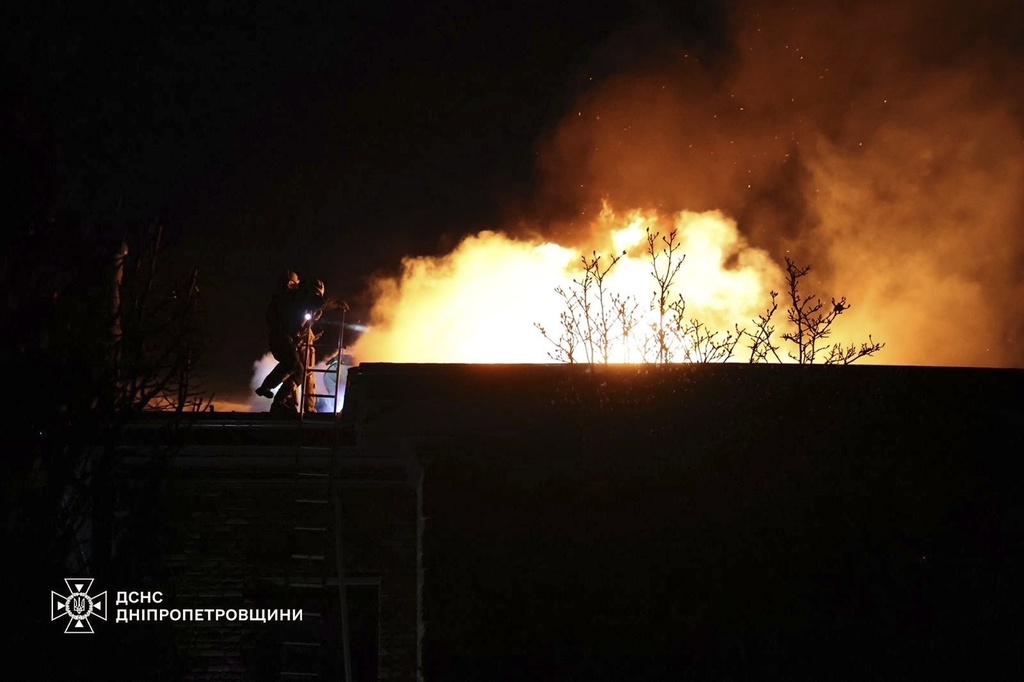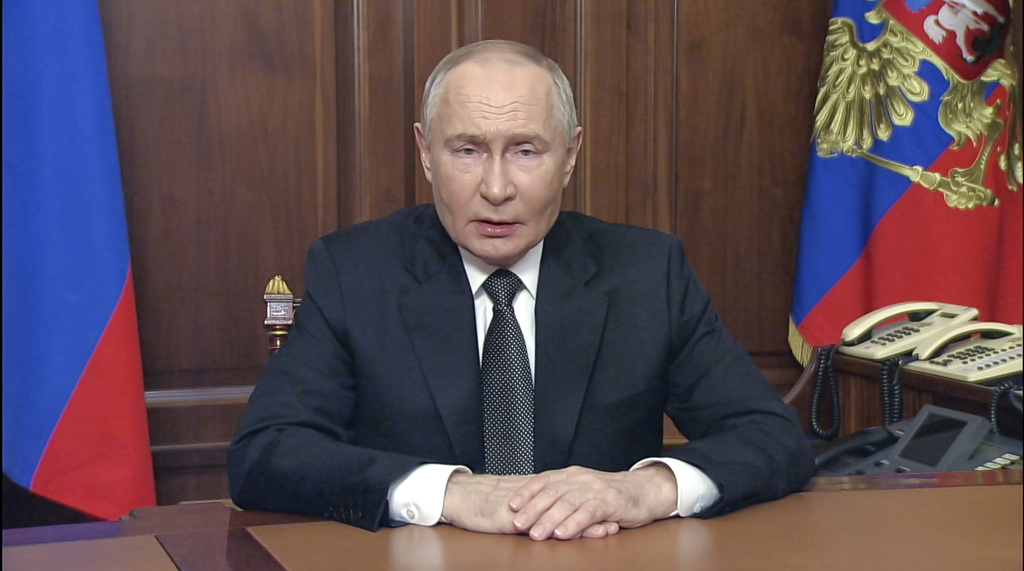Putin’s Oreshnik Missile Sends Chilling Message to the West \ Newslooks \ Washington DC \ Mary Sidiqi \ Evening Edition \ Russia fired a new intermediate-range ballistic missile (IRBM), the “Oreshnik,” striking a military-industrial facility in Dnipro, Ukraine. President Vladimir Putin confirmed the missile’s combat debut, boasting its Mach 10 speed and evasion of Western defenses. The attack coincides with escalating tensions following Ukrainian strikes on Russian soil using U.S.-supplied long-range missiles. While experts see the missile as a game-changer in warfare, Ukraine and Western allies condemned the strike as an attempt to intimidate NATO with the potential nuclear capabilities of Russia’s advanced weaponry.

Russia’s New Oreshnik Missile: Key Developments and Reactions
- Missile Debut: Russia used its intermediate-range ballistic missile “Oreshnik” for the first time in combat.
- Putin’s Claims: The missile travels at Mach 10, rendering Western defenses, including U.S. Patriots, ineffective.
- Target and Impact: The missile struck a facility in Dnipro, with multiple warheads causing significant destruction.
- Ukraine’s Response: President Zelenskyy called the strike a test of Russia’s new weaponry on Ukrainian soil.
- Western Viewpoint: Experts and officials warn the weapon marks a significant escalation, with potential nuclear implications.
Deep Look
What Is the Oreshnik Missile?
The Oreshnik, named after the Russian word for “hazelnut tree,” is the latest addition to Russia’s hypersonic arsenal. Capable of reaching speeds of Mach 10, the missile is designed to outmaneuver advanced air defense systems, including the U.S.-made Patriot systems deployed in Ukraine.
Key Features:
- Range: Between 500 and 5,500 kilometers (310 to 3,400 miles), categorizing it as an intermediate-range ballistic missile.
- Payload: Can carry heavier conventional warheads or multiple independently targetable reentry vehicles (MIRVs), which could be nuclear-tipped.
- Launch Location: The missile was reportedly fired from Astrakhan, a region near the Caspian Sea, approximately 800 kilometers (500 miles) east of Dnipro.
Putin’s Message to the West
Putin framed the missile’s use as a direct response to Ukraine’s recent strikes on Russian military installations using U.S.-supplied long-range missiles. He described the Oreshnik as a weapon developed in response to NATO’s deployment of similar capabilities and warned of dire consequences for further Western involvement.
“We believe that we have the right to use our weapons against military facilities of countries that provide their weapons for use against us,” Putin declared.
Putin also promised to provide advance warnings of civilian-targeted strikes, framing this as a “humanitarian” gesture, though he stated that no adversary could stop the Oreshnik’s attacks.
Escalation in the Ukraine Conflict
The missile launch comes during a period of heightened military activity. Recent Ukrainian strikes on Russian military facilities in the Bryansk and Kursk regions, using longer-range American weapons, killed and wounded Russian servicemen, further escalating the conflict.
The West’s Reaction
Ukraine and its Western allies quickly condemned the missile strike.
- President Zelenskyy: Called the attack a “test of Russia’s new weaponry on our soil” and accused Moscow of terrorizing civilians.
- U.S. Officials: Downplayed the immediate threat, stating that Russia likely has only a few of these experimental missiles in its arsenal.
- U.K. Defense Secretary: Warned that the missile marks a “serious moment” in the conflict, urging NATO to respond decisively to Russia’s escalating aggression.
A New Era in Warfare?
The missile’s Mach 10 speed and MIRV capabilities significantly complicate defense strategies. “Even the most advanced U.S. systems like Patriot will struggle to intercept these warheads, which descend at extreme speeds,” Savill explained.
The strike also revives fears of an arms race in intermediate-range ballistic missiles, particularly since the dissolution of the Intermediate-Range Nuclear Forces (INF) Treaty in 2019. Putin’s willingness to use such a weapon in Ukraine signals Russia’s readiness to push the boundaries of conventional and nuclear warfare.
Conclusion
For Ukraine, the strike underscores the urgent need for robust defensive measures and continued support from Western allies. For NATO, it raises the stakes in a conflict that increasingly threatens to spill beyond Ukraine’s borders.
Putin’s Oreshnik Putin’s Oreshnik








You must Register or Login to post a comment.